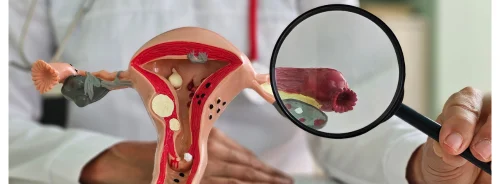Neoadjuvant chemotherapy (NAC) has significantly transformed the landscape of breast cancer (BC) treatment, offering a pivotal approach to reducing tumour size before surgery. Initially, NAC was predominantly utilised for locally advanced or inflammatory BC cases that were inoperable, with the primary aim of enabling less extensive surgical interventions and minimising post-operative complications. Over time, its application has broadened to include early-stage, operable BC cases, particularly those with a clear indication for systemic chemotherapy. This is especially relevant for human epidermal growth factor receptor 2 (HER2)-positive and triple-negative (TN) BC subtypes, which have demonstrated a higher likelihood of achieving pathological complete response (pCR) after NAC, leading to improved overall outcomes compared to luminal A or B BC subtypes when pCR is achieved. Despite these advances, only a fraction of patients attain pCR, and the treatment is associated with significant side effects. Therefore, early identification of patients unlikely to achieve pCR is crucial for optimising patient management and minimising unnecessary treatment burdens.
The Evolution of NAC in Breast Cancer Treatment
The role of NAC in breast cancer treatment has evolved considerably. Initially, it was a therapeutic strategy for downstaging inoperable BC, making surgical options viable and less invasive. The success in these challenging cases led to its adoption in treating early-stage BC with systemic chemotherapy indications. This approach is particularly effective in HER2-positive and TN BC subtypes, known for their aggressive nature and higher pCR rates post-NAC. Achieving pCR is a favourable prognostic marker, often associated with improved survival rates and reduced recurrence risks. However, not all patients benefit equally from NAC, as some do not achieve pCR, indicating a need for additional or alternative therapeutic strategies. The challenge lies in accurately predicting which patients will achieve pCR and which will not, allowing for more personalised treatment plans and sparing patients from the adverse effects of ineffective treatments.
Comparing MRI and Ultrasound in NAC Evaluation
The evaluation of tumour response to NAC is crucial for planning subsequent treatments. The revised Response Evaluation Criteria in Solid Tumors (RECIST) guidelines recommend breast magnetic resonance imaging (MRI) over ultrasound (US) due to MRI's superior reproducibility in tumour measurement. However, MRI's high cost and limited availability make it less accessible in many clinical settings. US, particularly B-mode US, offers a more cost-effective and widely available alternative, without the need for contrast agents. Studies have shown that when combined with clinicopathological features, US can achieve comparable accuracy to MRI in evaluating NAC response. The widespread use of US in routine clinical practice, coupled with its accessibility, makes it a practical tool for assessing NAC efficacy. Furthermore, advanced US techniques, such as elastography and contrast-enhanced US, have shown promise in enhancing the accuracy of response predictions, although traditional B-mode US remains the most commonly used method in clinical settings.
Developing a Predictive Model Using US Descriptors
In an effort to improve the predictive accuracy of NAC outcomes, a study was conducted to develop a model using standard American College of Radiology Breast Imaging Reporting and Data System (BI-RADS®) descriptors from pre-treatment B-mode US combined with clinicopathological tumour features. The study included 245 female patients with BC undergoing NAC, assessing factors such as tumour size, grade, molecular subtype, and specific US descriptors like tumour shape, margin, and the presence of calcifications or oedema. The findings indicated that certain US descriptors, such as spiculated or microlobulated tumour margins, were significant predictors of residual disease after NAC, suggesting that these features are associated with a lower likelihood of achieving pCR. Conversely, calcifications and oedema were associated with a higher likelihood of pCR, particularly in HER2-positive and TN tumours. By combining readily available imaging findings and clinicopathological data, this model offers a practical and effective tool for predicting NAC response, potentially guiding treatment decisions and improving patient outcomes.
Integrating standard BI-RADS® descriptors from B-mode US with simple clinicopathological tumour features presents a promising approach for predicting residual disease after NAC in BC patients. This predictive model is not only simple and cost-effective but also accurate, making it a valuable tool in clinical practice. Predicting pCR or residual disease early in the treatment process allows clinicians to tailor treatment plans more effectively, minimising unnecessary side effects and optimising therapeutic outcomes. As the field of breast cancer treatment continues to evolve, developing and validating such predictive models will become increasingly important in the era of personalised medicine. Future research should further explore incorporating advanced imaging techniques and artificial intelligence algorithms to enhance predictive accuracy and applicability across diverse clinical settings. This approach underscores the importance of accessible, cost-effective diagnostic tools in delivering high-quality, individualised care to breast cancer patients worldwide.
Source: European Journal of Radiology
Image Credit: iStock






